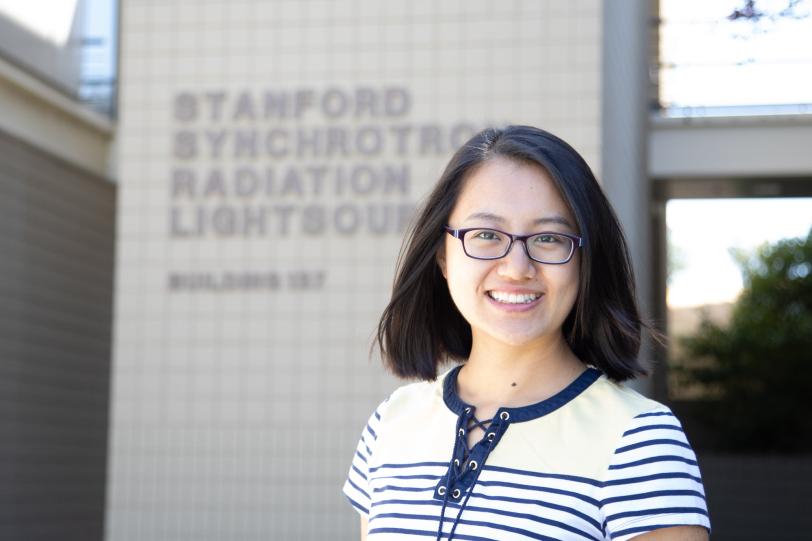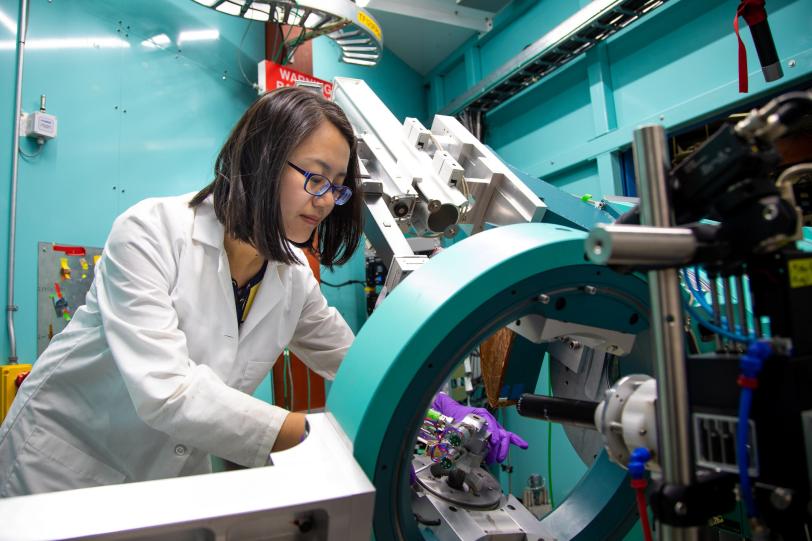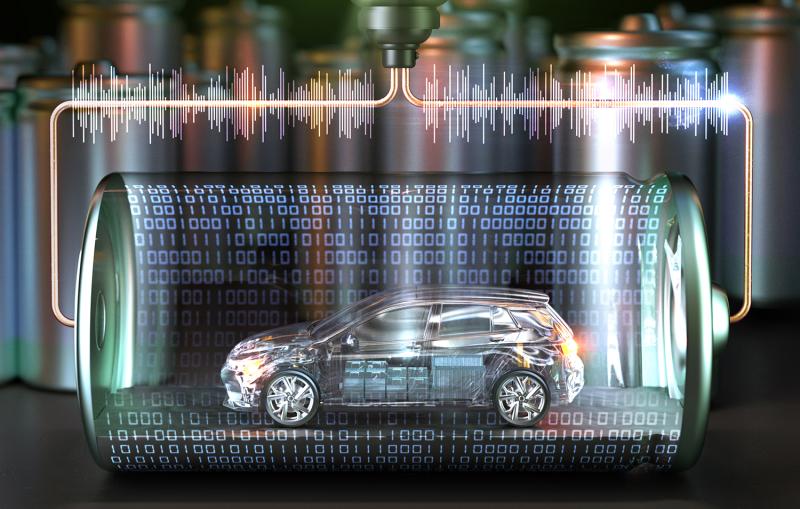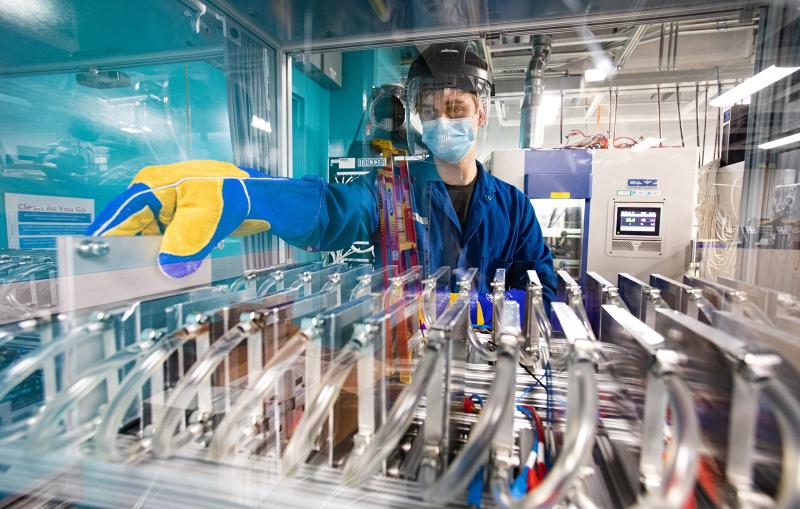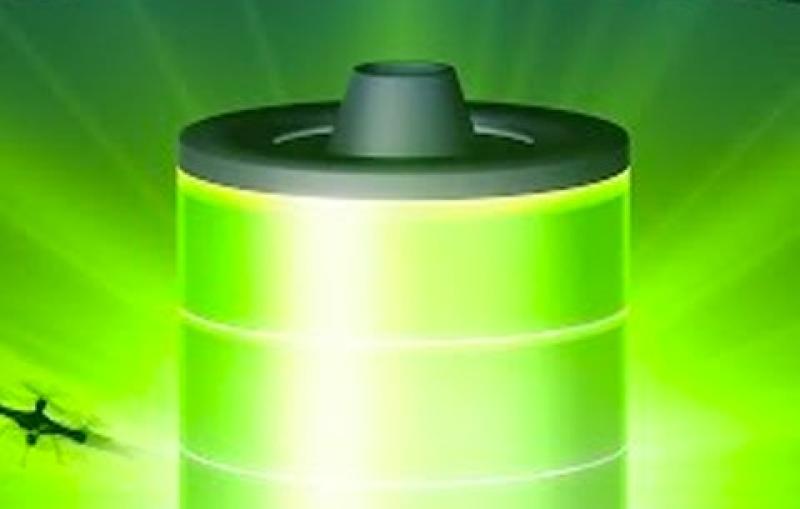Chuntian Cao wins 2018 Klein Award for lithium-ion battery research
Using SLAC’s X-ray synchrotron SSRL, Cao improves fundamental knowledge about how a new lithium-ion battery material works, which will help enable safer, longer-lasting devices.
Chuntian Cao, a postdoctoral fellow at the Department of Energy’s SLAC National Accelerator Laboratory, discovered her passion for batteries in graduate school. She says she loves studying something that’s so closely related to everyday life. In her current research, she probes lithium-ion battery materials and devices using SLAC’s Stanford Synchrotron Radiation Lightsource, or SSRL.
Cao says she is especially interested in silicon-based batteries. Although silicon has much higher capacity than other battery materials, meaning it can hold more charge, there are obstacles that researchers need to overcome to make the material more stable before using it in devices.
“Our goal is to improve our fundamental understanding of how this material works, which in turn could lead to safer batteries that can function more efficiently and last longer,” she says.
Cao has been selected to receive SSRL’s 2018 Melvin P. Klein Scientific Development Award for her research, in which she uses X-rays to map silicon as it cycles within a battery. She will accept the award at the SSRL/LCLS Annual Users’ Meeting at SLAC, where she will also give a talk about her research.
“I felt very surprised and honored when I received notice that I won the Klein award,” Cao says. “It recognizes and supports my research, and gives me encouragement for my future work.”
‘Go-to person’
In a recommendation letter, Michael Toney, head of the SSRL materials science division and one of Cao’s co-advisors, notes her incredible persistence and writes that her efforts have helped SSRL build up and strengthen its program in the foundational science of energy storage.
“Chuntian is one of the most deserving students for this award,” he says.
Cao’s positive influence in the SSRL’s energy storage program goes far beyond her own and collaborative projects, writes SLAC researcher Hans-Georg Steinrück.
“Due to her laboratory and beamlines expertise, as well as profound literature knowledge, she is the go-to person in the SSRL battery group for helping new students and postdocs get comfortable in the laboratory and with their projects,” he says.
Unlimited possibilities
In lithium-ion batteries, lithium ions cycle between two electrodes, an anode and a cathode, as the battery discharges and charges. These electrodes are divided by a separator and surrounded with an electrolyte, through which the ions can move back and forth. The area where the anode meets the electrolyte is called the solid electrolyte interphase (SEI), and is important for battery design since its properties affect the performance of the battery, including how much charge it can hold and how long it lasts.
Using SSRL, Cao investigates how the silicon and SEI change as the battery operates. In the research she will present at the 2018 User’s Meeting, she and her co-workers unraveled how the SEI forms on silicon electrodes, as well as other key properties. Based on the knowledge they obtain from X-ray studies at SSRL, she hopes they can find ways to improve the lifetime, capacity and safety of silicon-based batteries.
“SSRL is a state-of-art facility with brilliant X-ray beams and beamlines with various functions, giving us unlimited research possibilities,” Cao says. “In my research, these X-rays allow us to probe the silicon electrode while it is actively cycling inside a model battery. The multidisciplinary working atmosphere and the expertise of beamline scientists and engineers enable us to design new setups and experiments to push our research forward.”
The Klein award recognizes outstanding research accomplishments by undergraduates, graduate students and postdocs within three years of receiving their PhD who used SSRL for their research. Established in 2006 by the SSRL Users’ Executive Committee, the award honors the late Melvin P. Klein, a biophysicist and pioneer in the field of spectroscopic methods, including X-ray absorption spectroscopy.
SSRL is a DOE Office of Science user facility.
For questions or comments, contact the SLAC Office of Communications at communications@slac.stanford.edu.
SLAC is a multi-program laboratory exploring frontier questions in photon science, astrophysics, particle physics and accelerator research. Located in Menlo Park, Calif., SLAC is operated by Stanford University for the U.S. Department of Energy's Office of Science.
SLAC National Accelerator Laboratory is supported by the Office of Science of the U.S. Department of Energy. The Office of Science is the single largest supporter of basic research in the physical sciences in the United States, and is working to address some of the most pressing challenges of our time. For more information, please visit science.energy.gov.
